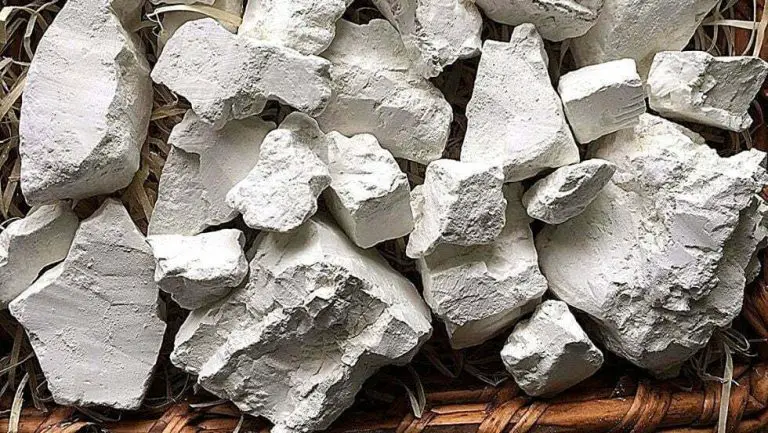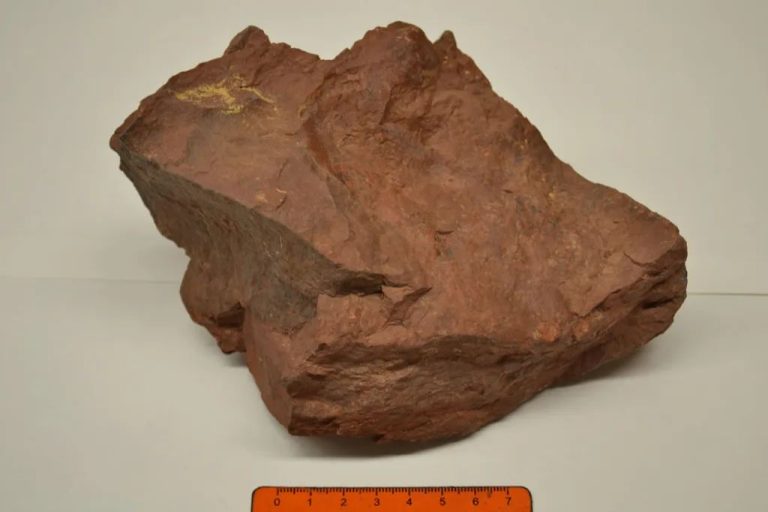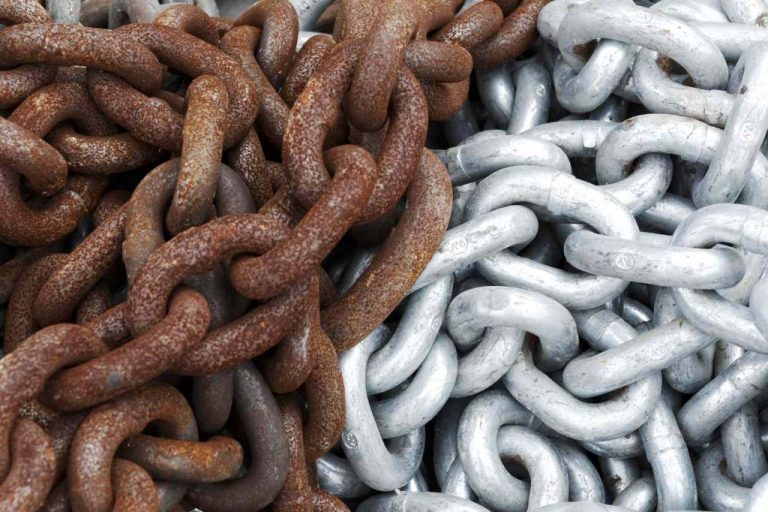What Does Pink Clay Contain?
What is Pink Clay?
Pink clay, also known as Rose clay or Pink kaolin clay, is a type of kaolinite clay that has a distinctive pink hue. It is found in various locations around the world, often in sedimentary deposits near granite formations. The pink color comes from the presence of iron oxides, including hematite, within the clay.
Geologically, pink clay consists primarily of kaolinite, a clay mineral with the chemical composition Al2Si2O5(OH)4. It also contains varying amounts of quartz, feldspar, mica, iron oxides, and other mineral impurities that affect its color and properties. The iron oxide hematite lends pink clay its distinct pinkish coloration.
While the exact origins are uncertain, large deposits of pink clay can be found in Australia, Europe, India, and the United States. Some sources are found in the Southeastern regions of France, like the Languedoc region. Others come from Australia’s Murray River region. India and Pakistan also have abundant sources of high-quality pink clay.
Benefits of Pink Clay
Pink clay is rich in minerals such as calcium, magnesium, iron, potassium, and silica that provide a variety of benefits when applied topically to the skin:
Absorption of Toxins
The negatively charged ions (anions) in pink clay have the ability to bind to positively charged toxins, heavy metals, and other impurities on the skin. Through this process of ion exchange, pink clay is able to draw out these harmful substances from pores and remove them when rinsed off.
Exfoliation
The fine particles of pink clay provide gentle physical exfoliation that removes dead skin cells, excess oil, and debris that can clog pores. This exfoliating action leaves skin cleaner, smoother, and better able to absorb moisture.
Soothing Skin
Pink clay is known for its ability to soothe irritated, inflamed skin. Its rich mineral content nourishes skin while supporting the skin’s natural barrier. The magnesium in pink clay also promotes stress relief in skin cells.
Mineral Composition
Pink clay derives its distinctive rose hue from iron oxide along with a composition of other trace minerals like:
- Iron oxide gives pink clay its rosy hue and offers benefits including improved skin hydration and treatment of sensitive skin.
- Magnesium is known for its ability to help absorb oil and toxins from the skin. It also promotes skin cell growth and regeneration.
- Calcium has anti-inflammatory properties that can soothe irritated skin.
- Silica helps remove dead skin cells, dirt, and oil from the skin’s surface to cleanse and tighten pores.
Differences from Other Clays
Pink clay contains a high amount of silica, manganese and magnesium, distinguishing it from other popular clays.
Kaolin Clay: Kaolin clay, also known as white clay or China clay contains kaolinite while pink clay has higher amounts of magnesium, manganese and iron. Kaolin clay is better suited for gentle, sensitive skin types.
Bentonite Clay: Bentonite clay, formed from volcanic ash, contains Montmorillonite while pink clay contains magnesium, manganese and silica. Bentonite clay is good for deep cleaning pores due to its absorption properties, while pink clay leaves moisture on the skin.
Rhassoul Clay: Rhassoul clay, mined from the Atlas Mountains in Morocco, does have similar minerals to pink clay like silica, iron and magnesium, however it contains more natural mineral salts like magnesium, calcium, potassium and sodium. Rhassoul clay has detoxifying properties similar to bentonite.
Green Clay: Green clay contains traces of iron oxides and decomposed plant matter, giving it its color. It also contains Montmorillonite similarly to bentonite clay. Green clay is known for its absorbency and drawing out impurities. The mineral composition and properties make it quite different from pink clay.
Benefits of Pink Clay
Pink clay has a range of skincare benefits due to its naturally occurring minerals and nutrients, especially for more sensitive skin types.
Face Masks
Pink clay face masks deeply clean skin and pores and remove impurities and toxins to provide a healthy glow. The gentle nature of pink clay makes these masks ideal for even sensitive skin types. Masks also soften skin and provide nutrients.
Cleansers
Pink clay cleansers gently exfoliate the skin’s surface and address skin concerns like blemishes, inflammation, and dryness. These cleansers unclog pores, balance the skin, and brighten the complexion without overdrying or irritating sensitive skin.
Bath Soaks
Soaking in a pink clay bath soothes dry or inflamed skin while allowing you to absorb minerals like magnesium, calcium, silica, and iron. The warm water helps promote circulation and opens the pores to deeply cleanse and nourish skin from the inside out.
Other Uses
Pink clay is used for several different purposes beyond skincare applications. Here is an overview of some of its other uses:
Food Supplements
Pink clay powder is sometimes added to food supplements or protein shakes as an additional source of minerals. Consuming pink clay internally this way is known as geophagy or “earth eating”, and some believe it may help remove toxins and assist with digestion. However, there is limited research on the benefits and risks of ingesting pink clay. It should only be done with caution and in small amounts.
Art and Craft
Pink clay can be molded and shaped into sculptures, ceramics, and craft items. When fired in a kiln, the clay hardens permanently. Many artisans use pink clay for its beautiful reddish-pink color and quality texture for handbuilding or throwing on the potter’s wheel.
Construction
Pink clay is sometimes used in construction materials or adobe structures to provide additional mineral content and coloring. However, other clays like red or brown clay tend to be more common choices for these applications.
How to Use Pink Clay
Pink clay is most commonly used in skincare and haircare. To obtain the full benefits, you need to know how to properly prepare and apply your clay mask or treatment.
Mixing Ratios
Start with a high quality clay powder and mix it with either water, apple cider vinegar, aloe vera gel, rose water, or yogurt. The general mixing ratio is roughly 1 part clay powder to 1-2 parts liquid.
For a thicker mask, use less liquid. For an easy to apply thinner mask, add more liquid. You may need to adjust based on humidity or your skin’s needs.
Application Tips
Apply your mask immediately after mixing and do not let it dry out. Spread an even 1⁄4 to 1⁄2 inch layer over your entire face or scalp with clean fingers or a brush. Leave on for 10 to 20 minutes then rinse thoroughly with warm water.
To avoid staining materials, apply and rinse over a sink.
Precautions
Perform a patch test before first use to check for a reaction. Pay close attention when applying under the eyes or around the mouth and avoid getting clay in the eyes or mouth.
Pink Clay Buying Guide
When shopping for pink clay, there are several aspects to consider:
Look for Reputable Brands
Stick to buying pink clay from reputable suppliers and skin care brands. Some reputable companies that sell quality pink clay include Aztec Secret, Mario Badescu, Sundial, Majestic Pure, and Pure Body Naturals. Look for brands that provide details on the origin and grade of their clays.
Check the Label
The product label should clearly state that it is 100% genuine pink clay and does not contain other added ingredients or fillers. Good pink clay should just have one ingredient – pink clay. Be wary of products with many extra ingredients as this could indicate lower quality.
Consider the Price
High quality pink clay typically costs between $10-$20 per pound. Very cheap pink clay under $5/lb is often too good to be true and may be mixed with other clays rather than 100% genuine. Be wary of prices that seem much higher or lower than the typical rate.
Recipes for Pink Clay
Pink clay can be used in a variety of DIY recipes for bath and body care. Here are some popular recipes using pink clay:
Pink Clay Face Mask
This nourishing facial mask helps to cleanse, exfoliate, and tone the skin:
- 2 tablespoons pink clay
- 1 tablespoon raw honey
- 1 tablespoon plain yogurt
- 1 tablespoon rose water or aloe vera gel
- 5 drops lavender essential oil (optional)
Mix ingredients together until smooth paste forms. Apply to clean face and leave on for 10-15 minutes before rinsing. Use 1-2 times per week.
Soothing Pink Clay Bath Soak
This mineral-rich soak helps relax muscles and soften skin:
- 1 cup pink clay
- 1/2 cup Epsom salts
- 10 drops lavender essential oil
Mix ingredients and store in an airtight container. For bath, add 1⁄4 cup of mix to warm running water and soak 15-20 minutes.
FAQs
Pink clay is rising in popularity due to its unique composition and benefits, leading many to have questions. Here are answers to some of the most frequently asked questions about pink clay:
What makes pink clay different from other clays?
The pink hue comes from its high iron oxide content. It also contains magnesium, calcium, potassium, and silica. This unique blend gives it gentle exfoliating and clarifying properties.
Is pink clay safe to ingest?
No, pink clay should not be ingested. It is safe for topical use only.
Does pink clay help with acne?
Yes, the magnesium and calcium have anti-inflammatory effects that can help soothe acne. The clay also absorbs excess oils.
Can I use pink clay as a mask everyday?
It’s best to use it as a mask no more than 1-2 times per week. Using it daily could dry out your skin excessively.
Will pink clay stain my skin or clog my pores?
When used properly as directed, pink clay should not stain skin or clog pores. Make sure to rinse thoroughly after use.



